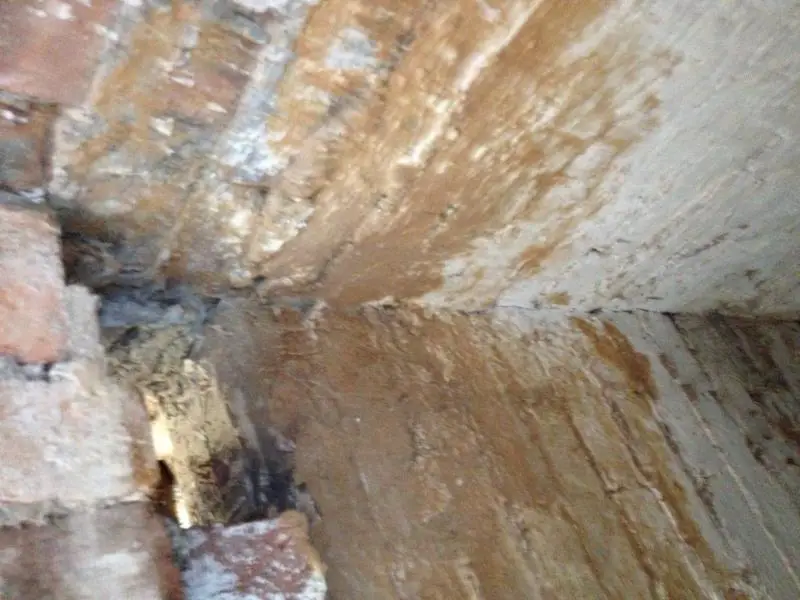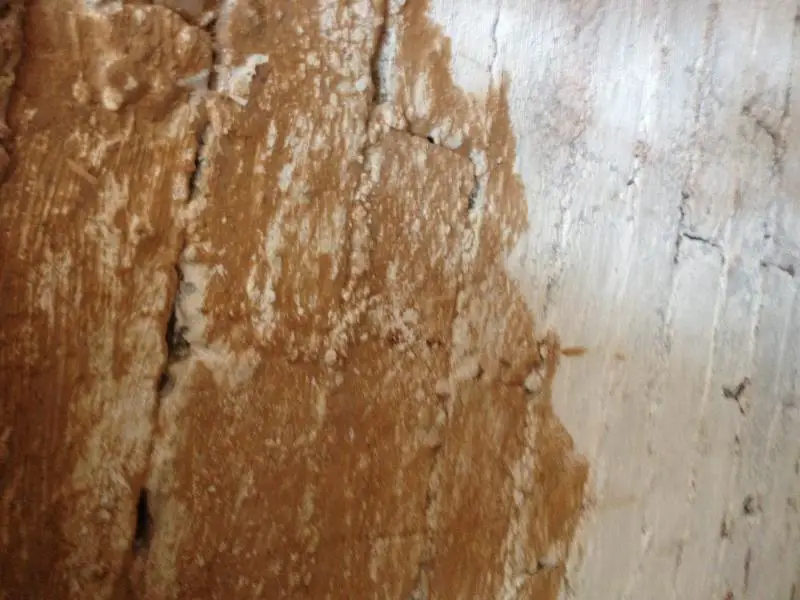I have stripped out some flooring and joist where an old bath had been leaking and i have discovered this on the wall i the basement around where the wood was rotton.Is this drt rot or some thing else.There are no other signs of growths.This is all it looks like.The timbers that came out did have a cuboid type rot.More a wet rot type.I have attached a few pics in my album.
You are using an out of date browser. It may not display this or other websites correctly.
You should upgrade or use an alternative browser.
You should upgrade or use an alternative browser.
Dry rot or not
- Thread starter Gordy90210
- Start date
Sponsored Links
I am going to do that tomorrow but i just wanted other opinions.From what i have heard some companies will just scare you and charge you a fortune for the work.And i am still unsure what it is!
Sponsored Links
In pic one, just below the opening you can see faint strands of what looks like dry rot.
The brown business i think i've seen before on basement walls - it used to be the "pre-condition" for what was called cellar rot. If examined very closely, it appears to have a tiny cover of furry fuzz. Typically, ground water (or a leaking drain) was penetrating the cellar wall(s).
The brown business i think i've seen before on basement walls - it used to be the "pre-condition" for what was called cellar rot. If examined very closely, it appears to have a tiny cover of furry fuzz. Typically, ground water (or a leaking drain) was penetrating the cellar wall(s).
THanks Dann09.Thats just exactly what it looks like smalll strands covering the brown stain.Most of the brown stain is on an internal dividing wall.I am wondering if the toilet has leaked at an earlier date and that is what the stain has been caused by.What would the best treatment be for this.And is cellar rot something i should worry about and how would i treat it.
Many Thanks
Many Thanks
We could better advise you if you could locate the larger area in question, in a scanned floor plan for instance.
You must reveal the total extent of the dry rot, or cellar rot, strands in the flooring timbers, skirtings and behind any nearby plastering.
Cellar rot seems to go by various scientific names, but it's a wood seeking and wood destroying fungus - altho not as virulent as dry rot.
Typically, we would reveal and remove all damaged material, wire brush down and spray with anti-fungal chemicals. We would also locate and remove any source of moisture, and provide ventilation.
You must reveal the total extent of the dry rot, or cellar rot, strands in the flooring timbers, skirtings and behind any nearby plastering.
Cellar rot seems to go by various scientific names, but it's a wood seeking and wood destroying fungus - altho not as virulent as dry rot.
Typically, we would reveal and remove all damaged material, wire brush down and spray with anti-fungal chemicals. We would also locate and remove any source of moisture, and provide ventilation.
I've made no claim to "definitively" identify either fungus.
I qualified my claims with the terms: "what looks like" and "i think i've seen"
AAMOI: my eyesight isn't too clever but i'm routinely seeing fungal and water damage, sometimes on a daily basis.
FWIW: i do recall a recent, rather redundant, remark that:"It's knowing what to look for, rather than the looking"
I qualified my claims with the terms: "what looks like" and "i think i've seen"
AAMOI: my eyesight isn't too clever but i'm routinely seeing fungal and water damage, sometimes on a daily basis.
FWIW: i do recall a recent, rather redundant, remark that:"It's knowing what to look for, rather than the looking"
What a sensitive and odd response. I usually expect better from you.
Yet you twice move the goal posts, and then make a silly attempt to attack the man.
Given the nature of the forum, many responses on here are tentative, but some are, as you well know, from tradespeople who offer tentative opinions formed by experience, and expertise.
Yet you twice move the goal posts, and then make a silly attempt to attack the man.
Given the nature of the forum, many responses on here are tentative, but some are, as you well know, from tradespeople who offer tentative opinions formed by experience, and expertise.
No
The OP posted a question "Dry rot or not"
Then you come along and make the statement "you can see faint strands of what looks like dry rot"
You don't qualify it, or state what other things it could be, just a straight forward "it looks like".
To me, that seems like a definitive response to the OP's question, and one which the OP has clearly latched on to with his follow up comments because you have confirmed his suspicions
It is you who is back-tracking with the "well it was only tentative" caveat
If this is typical of the damp treatment industry, then no wonder no-one trusts those companies
The OP posted a question "Dry rot or not"
Then you come along and make the statement "you can see faint strands of what looks like dry rot"
You don't qualify it, or state what other things it could be, just a straight forward "it looks like".
To me, that seems like a definitive response to the OP's question, and one which the OP has clearly latched on to with his follow up comments because you have confirmed his suspicions
It is you who is back-tracking with the "well it was only tentative" caveat
If this is typical of the damp treatment industry, then no wonder no-one trusts those companies
DIYnot Local
Staff member
If you need to find a tradesperson to get your job done, please try our local search below, or if you are doing it yourself you can find suppliers local to you.
Select the supplier or trade you require, enter your location to begin your search.
Please select a service and enter a location to continue...
Are you a trade or supplier? You can create your listing free at DIYnot Local
Sponsored Links



